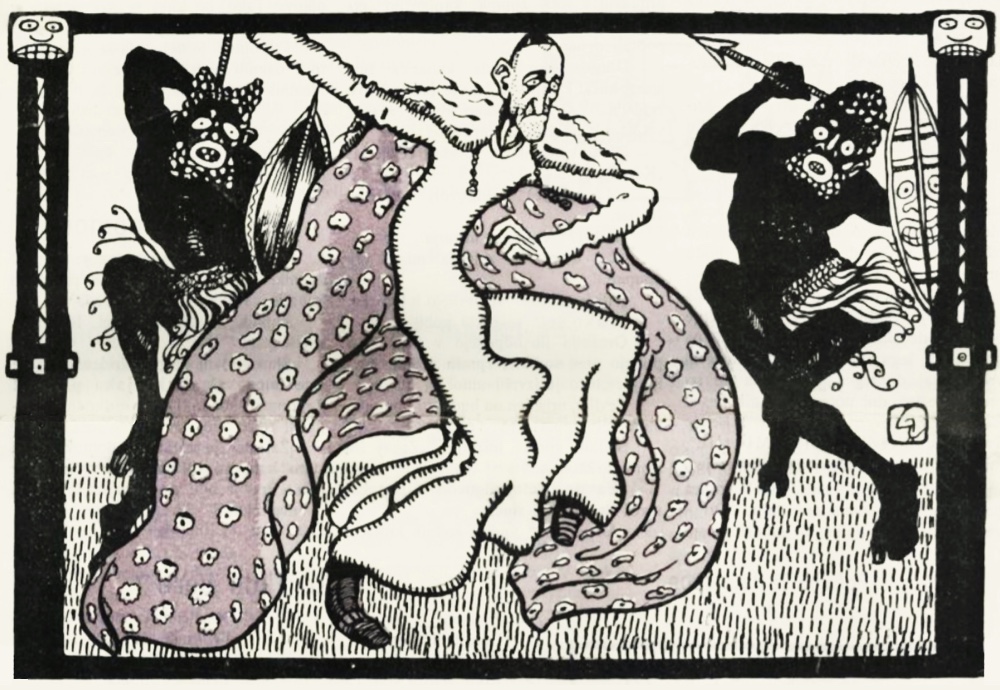SOUTH SLAVIC HABSBURG LANDS: RESISTING OTHERING BY CLAIMING EUROPEANNESS AS WHITENESS
With the notable exception of Trieste, the Monarchy’s largest port, urban settlements on the southern Habsburg periphery were small provincial towns with only nascent industries. They were not major destinations of ethnographic shows but merely short stops along the way from Trieste to Vienna or metropolitan centres further afield. Especially when larger shows came to town, these peripheral places had the opportunity to feel they were a part of something bigger and better. When Buffalo Bill came to Ljubljana, the Lattermansallee entertainment space “felt as lively as Prater” (Slovenec, May 19, 1906), giving Ljubljana a taste of Viennese life.
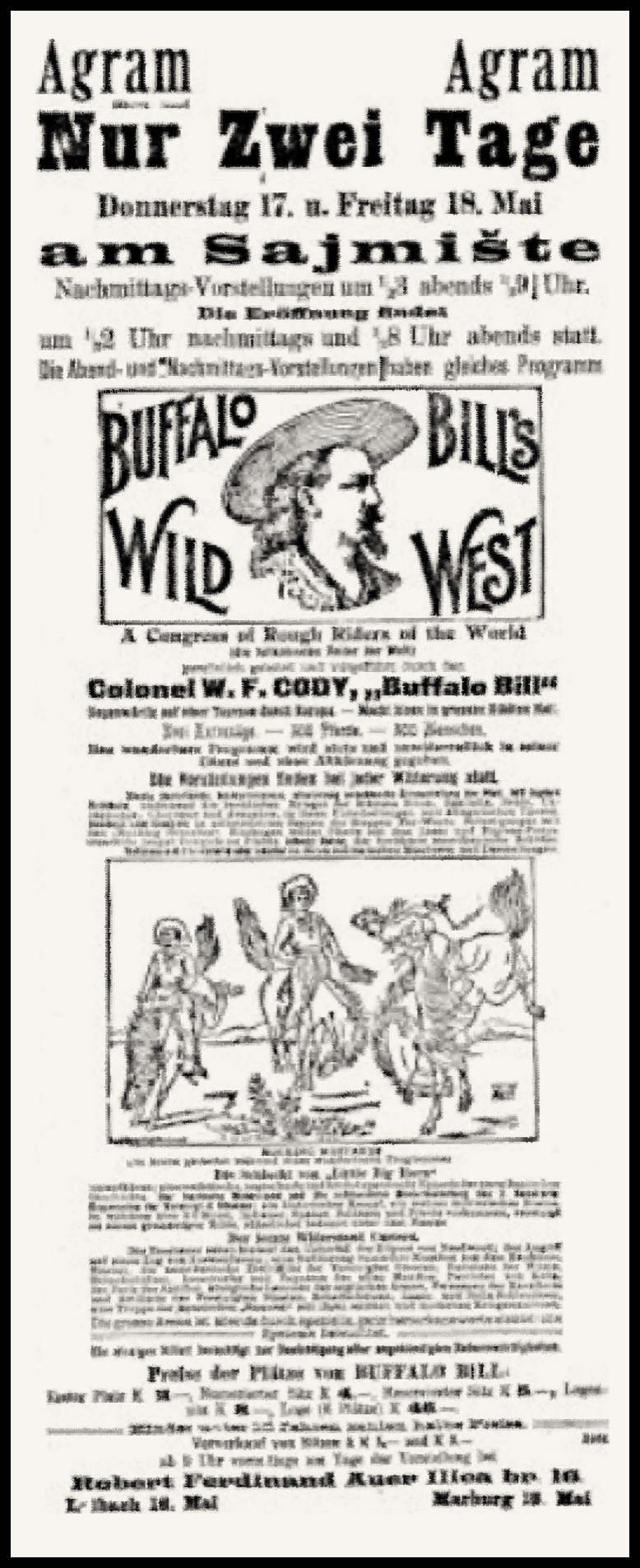
Advertisement for Buffalo Bill’s Wild West Show in Zagreb. Source: Agramer Zeitung, May 6, 1906.
Advertisement for Buffalo Bill’s Wild West Show in Maribor. Source: Marburger Zeitung, May 17, 1906.
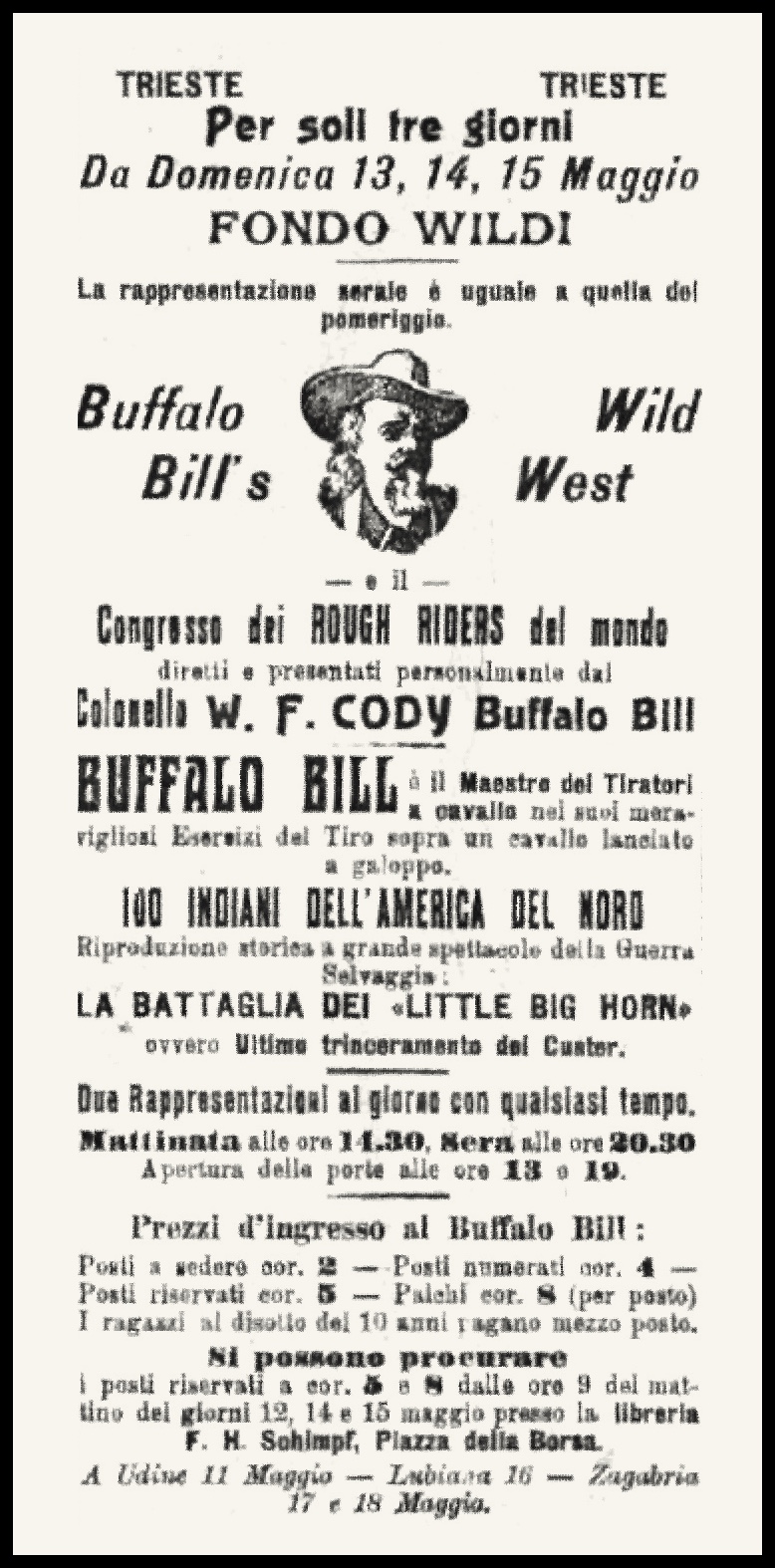
Advertisement for Buffalo Bill’s Wild West Show in Trieste. Source: L’Indipendente, May 11, 1906.
The Sudanese were the most common among ethnographic show performers, marketed as the “Sudanese caravan” in 1885, the “Shilluk village” in 1899, and the Nubians in 1911. Other troupes included the Zulu Kaffirs from South Africa in 1880 and the Suaheli (Swahili) from German East Africa in 1892. The turn of the century saw an increase in the number of Völkergruppen, who performed as part of circus troupes displaying a variety of skills such as acrobatics and horse riding but were still framed as “typical” representatives of their peoples. Buffalo Bill’s Wild West Show, which stopped in Trieste, Ljubljana, Zagreb and Maribor in 1906, built on a similar mix of showcasing skill and promoting cultural essentialism.
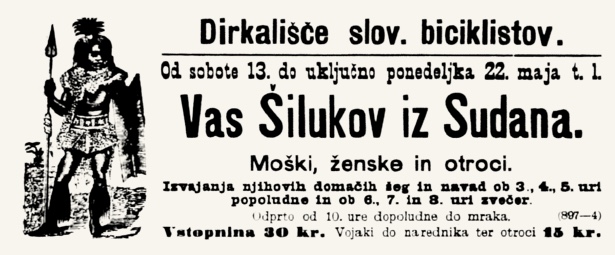
Advertisement for the “Shilluk village” in Ljubljana. Source: Slovenski Narod, May 15, 1899.
Another important feature of the marketing employed by ethnographic show and circus managers was relating their acts to current political affairs. Therefore, the Zulu Kaffir troupe, which performed in Gorizia and Ljubljana in 1880, responded to interest in the Anglo-Zulu war. Performers in the Sudanese caravan, which passed through Trieste and Ljubljana in 1885, were billed as warriors of the Mahdi’s army, and Buffalo Bill’s Wild West Show promised to re-enact the conquest of the North American West.
Satirical illustration of the bishop of Ljubljana dancing with the Ashanti. Source: Osa, February 10, 1906.
Press coverage and souvenir photographs ensured that types embodied by ethnographic show performers became commonly known outside performance spaces. Although Ashanti troupes never performed in the Empire’s southern regions, news of their performances in Vienna ensured their place in the Habsburg popular imagination well beyond the capital. When a satirical newspaper wanted to mock the bishop of Ljubljana for denouncing dancing in pairs as a sinful path to temptation it did so by suggesting that he might prefer the Ashanti way of dancing: “We do not touch at all, each moving on our own, we decently hop, finding joy on our own. Christians, this is the only true dance! Ashanti” (Osa, February 10, 1906).
Photographs from a newspaper article about the 1911 Sudanese performance in Ljubljana. Source: Ilustrovani tednik, June 2, 1911.
The framing of ethnographic shows taught audiences to recognise the difference between themselves and the performers through a racial lens. This simultaneously solidified the association between indigenous peoples and various degrees of ‘savagery’ and enabled audiences to see themselves as white, not only through skin colour but also through association with Europeanness, civilisation, and modernity. In the late Habsburg context this intersected with emerging nationalisms, which envisaged national cultures as distinct and positioned hierarchically. For Slavic-speaking audiences, ethnographic shows and racialised circus acts therefore served as an opportunity to reassure themselves of their cultural and racial Europeanness deflecting German and Italian nationalist discourses that positioned them as the uncivilised Others.
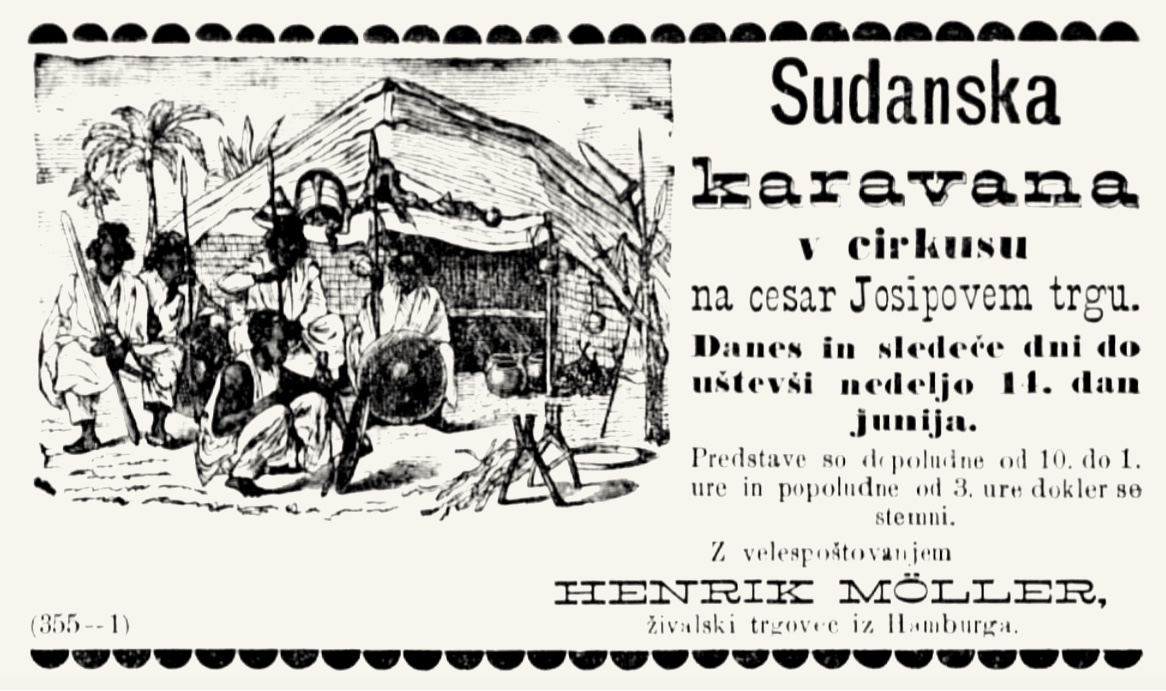
Advertisement for the Sudanese caravan in Ljubljana. Source: Slovenski narod, June 12, 1885.
Performers were racialised in gendered ways. Press coverage alludes to the supposedly threatening nature of African masculinity and ‘savage’ sexuality. Ethnographic shows raised anxieties about sexual encounters between performers and audience members, particularly between black men and white women, understood as a threat to social order and the racial purity of the nation. A newspaper report about the Sudanese caravan performance in Ljubljana employs a string of adjectives to construct young (white) women’s innocence, which at the same time contains a vulnerability to corruption through contact with black male bodies:
These barefooted men showed particular interest in the young, dolled up women. You could see many times how a madam or mademoiselle was treated to a swift-stepped approach by one of them muttering something incomprehensible and laughing. … We find it incomprehensible how our weaker, more sensitive sex can take such pleasure from this buffoonery! Even more incomprehensibly incomprehensible is that our uncorrupted innocent delicately shy female school youth can withstand this without their cheeks blushing when watching half naked people clothed only in loin cloths, even if they are savages. (Slovenec, June 16, 1885)
As elsewhere, ethnographic shows and their echoes in the media played a key role in the formation and dissemination of gendered racial ideas. In contrast to the reception of ethnographic shows in Western imperial metropoles, yet in parallel to developments elsewhere in Eastern Europe, they also allowed politically non-dominant local audiences to claim an implicitly white European identity in ways that bypassed politically dominant Germanness and deflected othering discourses of German and Italian nationalisms.
![]()
Credits:
Andreja Mesarič, Department of East European Studies, Faculty of Arts, Charles University, Prague.

